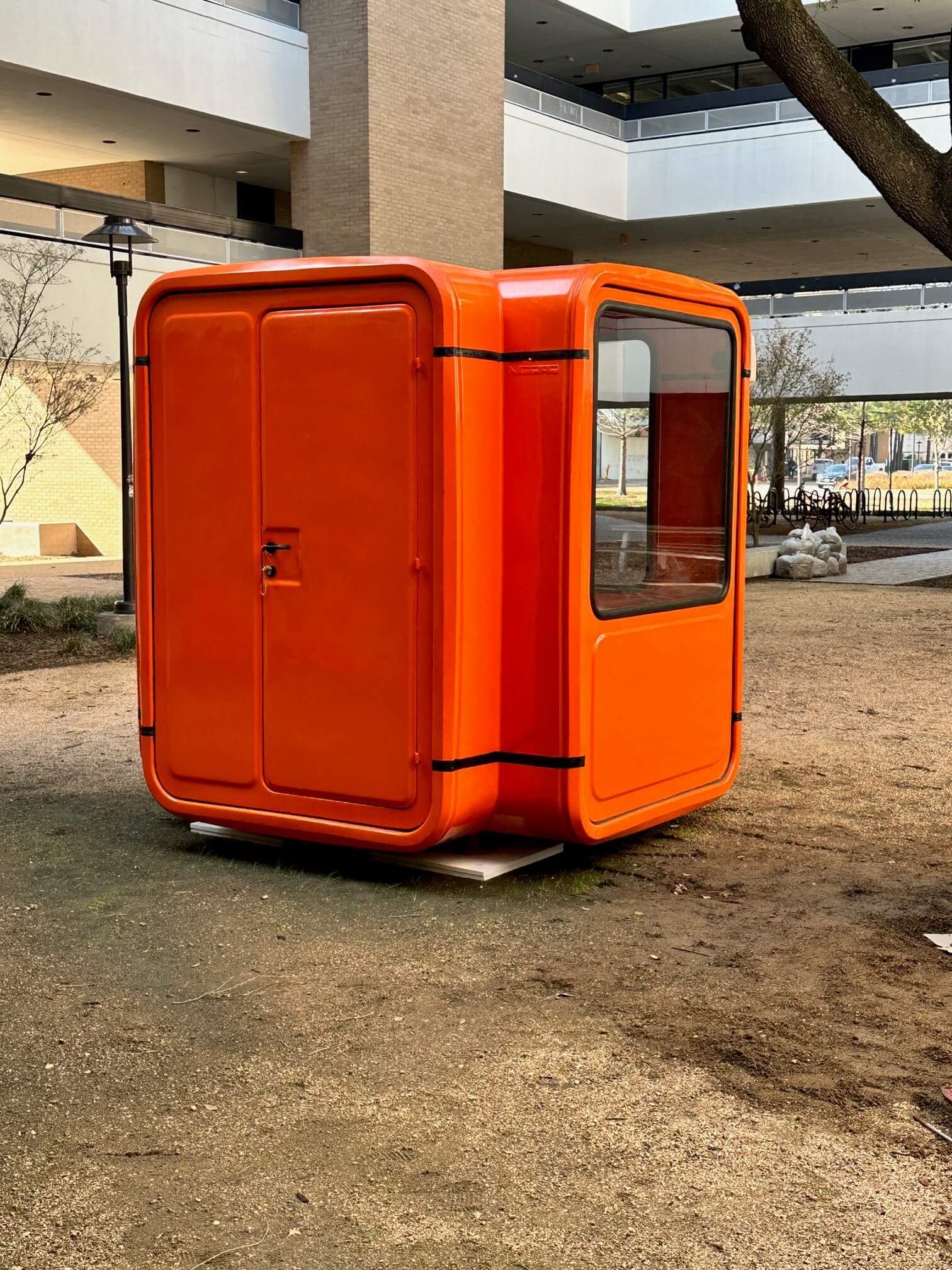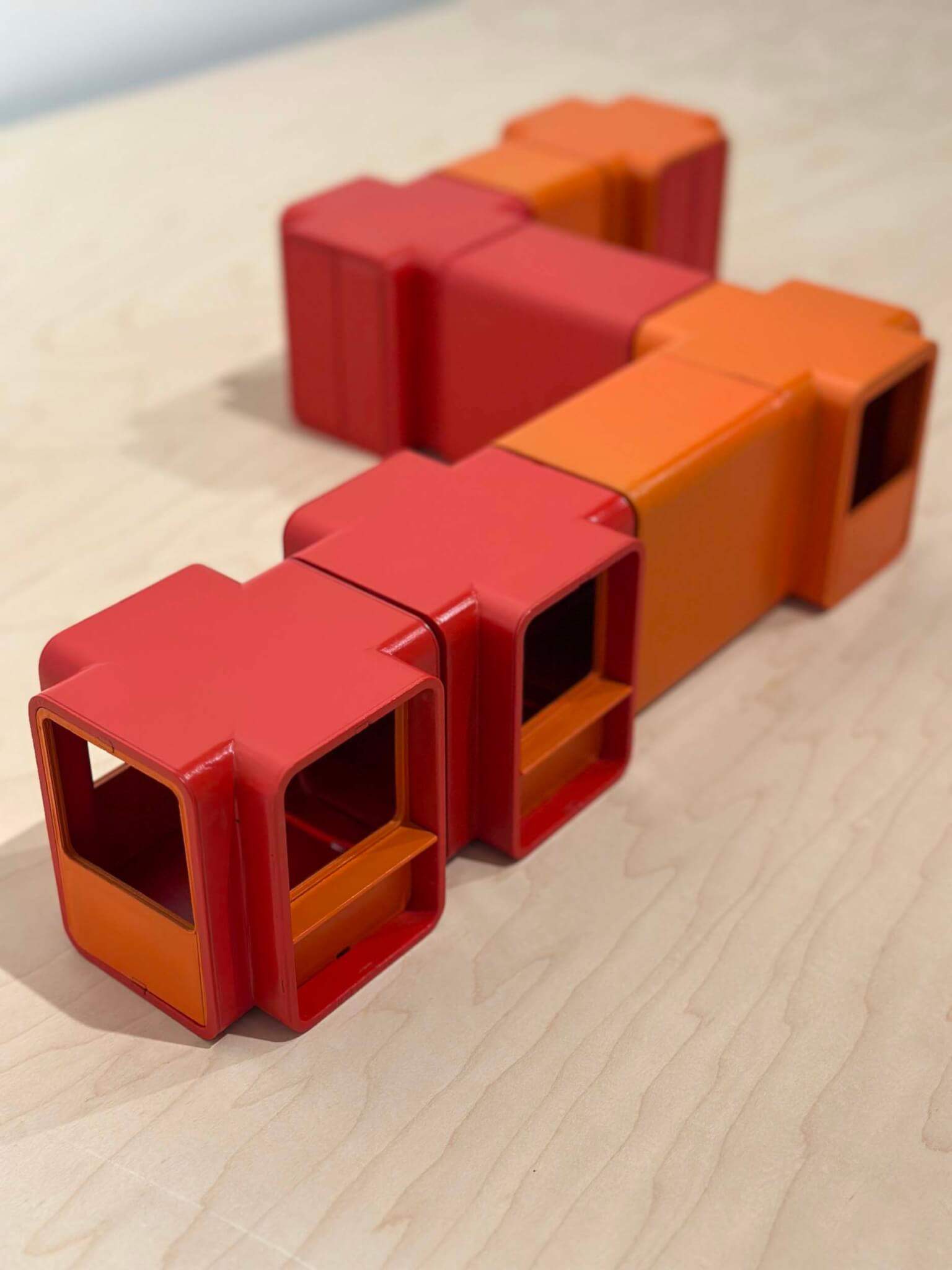In the late 20th century, brightly colored K67 kiosks dotted the streets of former Yugoslavia. Conceived as small cubic booths measuring eight feet all around, the structures were used as newspaper stands, coffee shops, post offices, attendant booths, and more. Their bold hues contrasted their otherwise urban concrete surroundings, and today, for a limited time, a restored kiosk graces the courtyard of the Fine Arts building at the University of Houston (UH).
The K67 kiosk was designed in 1966 by Slovenian architect Saša Janez Mächtig and is based on polyfiber reinforced modules. While the compact boxes can stand alone, they could also attach to one another to form a larger space. Around 7,500 were produced before manufacturing stopped in 1999; most of the remaining designs were destroyed during the Yugoslav Wars.

Dijana Handanović, an assistant professor at the University of Houston’s Gerald D. Hines College of Architecture and Design has taken it upon herself to restore the kiosks, bringing a bit of Balkan history to eastern Texas. A single unit, rendered in a reddish, orange hue will display outside of the Fine Arts building for the remainder of the semester.
Handanović, a refugee from Bosnia and Herzegovina, chose the University of Houston for the exhibition because of her connection with the school. After fleeing conflict in Bosnia and Herzegovina where she grew up she moved to Austria and ended up studying English in the United States at UH, where she went on to take classes in interior design. Her recent project recalls past experiences in Yugoslavia and moments when the former country collapsed.
“The Brutalist architecture was meant to create brotherhood and unity between different ethnic groups, but instead it represented a forced ideology,” Handanović detailed in a press release. “When Yugoslavia collapsed, monuments that were supposed to represent unity now represented division. In contrast, the kiosks presented a neutral, accepting, adaptable space that was embraced by all ethnic groups.”

To coincide with the staging of the K67 a series of archival materials, including drawings from the architect, 3D models, and a short film on the objects will exhibit inside UH’s Blaffer Art Museum through March 12.
For the exhibition, Professor of Composition Rob Smith and a group of students composed 24 works, each uniquely inspired by former uses of the kiosks. This music was played at the exhibition opening on January 26 and can be heard in the show.
“I was embraced at UH with open arms, starting with the Language and Culture Center,” she said. “This is my home. I want to give back and create that feeling for students who were like me. Through the kiosk, they can stop, meet somebody and create their own story.”
This isn’t the first time one of Mächtig’s designs has touched down on U.S. soil. In 2019, one of the surviving models was displayed in New York City as a Design Pavilion, part of programming put on by the Times Square Alliance.


![6 Best Polyurethane for Floors [Reviewed & Buyer’s Guide]](https://archup.net/wp-content/uploads/2023/03/6-Best-Polyurethane-for-Floors-Reviewed-Buyers-Guide.jpg)
